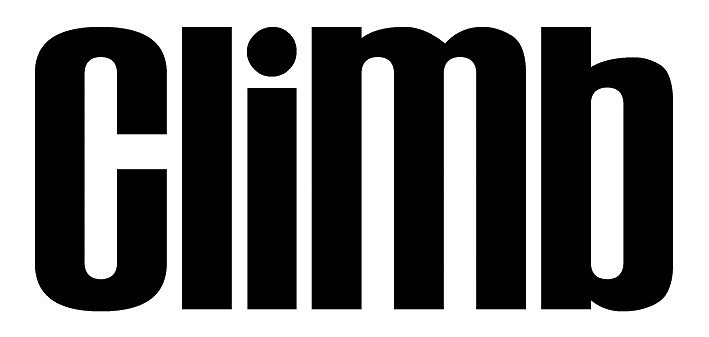
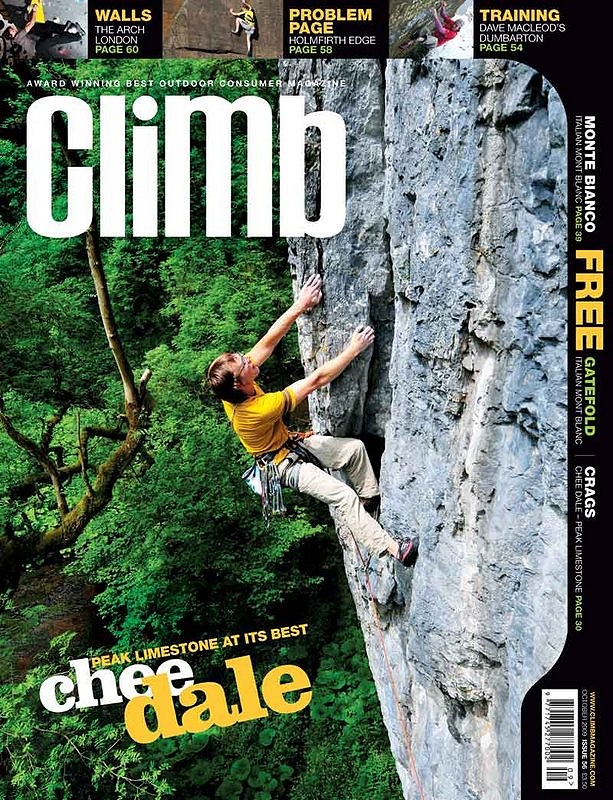
Take a look at what's inside the new look October issue of Climb Magazine. Climb is available to purchase from all WHS stores and other major newsagents, specialist outdoor retailers, as well as now being available in Tescos. You can subscribe online at www.climbmagazine.com or pick up a copy at your newsagents or at your local climbing shop. We've also got a digital teaser of the magazine this month at www.climbmagazine.com
Cheedale

Far from the comforting security of high friction gritstone Chee Dale offers two contrasting but equally intense challenges. Along the banks of the river Chee can be found a superb collection of intense sport climbs standing side by side with some of the country's finest traditional limestone routes. For three decades this leafy lost world played a key role in the development of British limestone climbing. Here three activists explain its enduring attraction. This was the decade that limestone came out of gritstone's shadow.
Al Evans was a talented member of a close knit group of new routers that pushed technical difficulties towards new limits. Here he recalls some memorable days out with Gabriel Regan and Tom Proctor, two of the most powerful but low key climbers of that group. Al remembers 'Gabriel was a modest but determined climber, he probably underestimated himself. Tom was also modest but in a different way, I think that Tom genuinely underestimated how hard the routes he was doing were, Gabriel knew they were hard but could not understand why other people could not do them.
It was while making the first ascent of Machineries of Joy with Dave Knighton that I peered over the overhang and saw an improbable looking line up to the left. The line of M of J was more obvious and I'd spotted a second pitch up the wall across the gully, there was also a peg to go for so I stuck with the original plan.
Unbeknown to me the route up to the left had already been done as an aid route, Red Rooster in 1969 but two weeks later I returned armed with a leading machine called Gabriel Regan. It was one of the hottest days of the hot summer of 1976 and we tried to find shade as we hydrated at the foot of the route. Eventually we decided it was not going to get any cooler and Gabriel was ready to go for it. Up to the old peg on RR then left and he gazed over the roof, it looked improbable on my inspection, completely unfazed Gabriel launched over the roof to find a huge bucket of a jug, fortune favours the brave and obviously I was not brave enough!
Terra Incognita
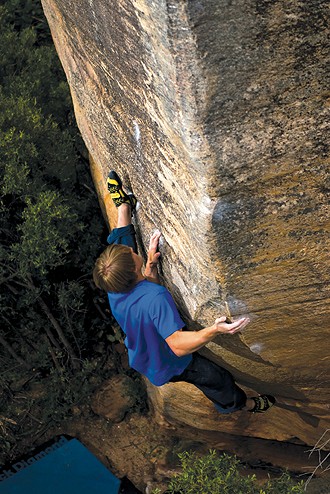
While geographically (and politically) spanning three countries (France, Italy and Switzerland) there's little doubt that in the public imagination Mt Blanc, the Alps' highest mountain, is associated with Chamonix and the French Alps. But whilst the smaller, quieter Swiss section in the north seems almost to enjoy its relative obscurity, it's no secret that the real terra incognita of Mt. Blanc is the Italian side. Stretching in an uninterrupted line for almost 25kms the Italian part of the range looks like a single, immense wall. The main watershed looms above the twin Veny and Ferret valleys from an average altitude of 3800m, forming a series of giant slopes whose most spectacular features are the south face of Mt. Blanc (with the three independent Miage, Brenva and Freney/Brouillard walls), the Rochefort/Jorasses range and the Peuterey Ridge, the longest of the Alps. But there's a lot more equally as mpressive.
One may wonder why, with all these superlatives, the Italian side is so little known? The simplest reason may be that Courmayeur is no Chamonix as it has traditionally catered for a more selective climbing public.,
It's Guide Society (the second oldest of the world after Chamonix) has never attempted to bring the masses here, often preferring to rely on a faithful but inevitably limited number of returning clients.
There's no doubt also that the Italian side is more unspoilt. There's just one lift (against five in France).
Val Ferret and Val Veny are relatively undeveloped, thanks to their vulnerability to huge avalanches during winter. It's really a wild place. For instance, the small Pra Sec glacier, below the monumental south face of the Jorasses, is the least frequented of the entire Alps(a quick look at it will tell you why). On the other hand, the Triolet area and the Monzino hut environs are slowly becoming, if not exactly crowded, at least more well known. The fact that almost all the guarded huts on the Italian side now feature better food and better hospitality than the rest of the massif is becoming quite a big plus.
What follows is a small and very incomplete selection of rock routes. Five are real tried-and-true classics. Two (Nero su Bianco on the Aiguille Noire and Power of Love on the Aiguille de L'Eveque Ð Pt. Creswell) are quite exotic endeavours and may be of interest to the truly adventurous. Still, this is what the Italian side is all about - enjoying the sun, the unspoilt nature, the remoteness and the hospitality while sticking your nose in places where not many others would like to go.
Isn't that what mountaineering is really all about?
Bishton's Bouldering World

It's that time of year again when I sit at my computer and try to find some scintillating bouldering news to enthral you with, only to realise that it's the middle of the British summer and nobody is doing any climbing of any sort due to the biblical downpours, humidity, see page, midges, heat, cold and all the other reasons why our muddy little island (as an American mate of mine calls the UK) is such a nightmare in the summer. Personally, I like to take it easy for a few months and let my body recover a bit from the battering it gets from climbing, but this is simply because I'm an old fart. The keen boulderers have still been doing stuff, but many of them have taken the hint and travelled to get more favourable conditions!
So, down to business. Rocklands is the obvious choice for the travelling boulderer in the summer months. Situated in the heart of South Africa, Rocklands has cool, dry weather whilst the UK is a boiling humid mess, and it's pretty easy to get to from the UK. Yes, it's an expensive plane ticket (Ryanair don't yet fly long haul, thank the Lord) but there's no jet lag (two hour time difference) and living is dead cheap when you're there. And then there are the boulders – huge plateaus of pristine sandstone boulders that are seemingly made to be climbed set in the type of surroundings that make naturalists' knees tremble. This magnet for the steely-fingered has once again delivered the goods.
Gear
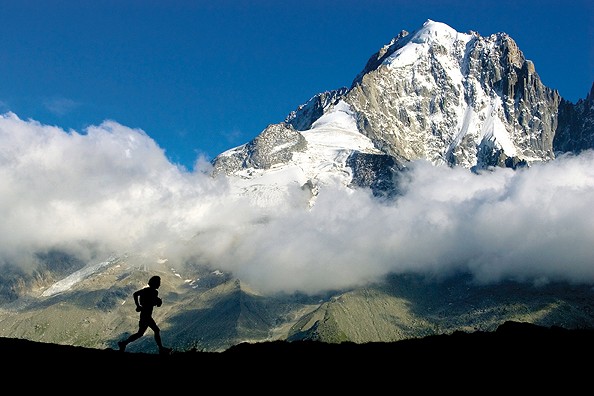
At one time they were called Long Johns, LJs, Thermals or even long combinations, terms that to me at least conjured up an era of tweed clad heroes like Mallory or Shipton, set square against the slope, long ice axe in hand, doing battle with the elements somewhere.
Change the name and everything else changes too.
The modern term base-layer sounds, I suppose, a bit technical, like the foundation on which all else rests, which in a way it is. Nowadays, we all wear the stuff for everything from running or bouldering to Scottish winter
climbing and 8000m peaks.
My first set of such things was bought from an ex-army shop and although the label said 'Wool', the experience was more like wire wool.
I'm sure I've still got some scars, but that's probably more than enough information about that.
To say they were warm would not be true, they were bloody boiling and itchy as hell (assuming hell to be particularly itchy that is) most of the time and, when the sweat and rain and snow or even Scottish bog was combined with them, they smelled like an old wet dog.
Base-layers, although not called that, I think first became an item of mountain gear in 1970 thanks to Chris Bonington and his expedition to the South Face of Annapurna. It was arguably a nearly bankrupt Britain's equivalent to the USA Moon Landings and caused quite a stir at the time both in and out of climbing circles. One advert featured the late great Dougal Haston (our Neil Armstrong) standing in his underwear (base-layer) in front of the mighty South Face (rather than on the moon) with only double boots and a Whillans harness for modesty. The underwear was proudly claimed to be made by Damart of West Yorkshire. It became an iconic brand which survives to this day mostly as genteel ladies' wear manufacturer. Their stuff was very good although it shrank to about 20% original size if tumble dried (oops!).
FREE Mountain INFO downloads at Climb Magazine

Mountain INFO is now exclusively available on-line via the Climb Magazine website FREE!! This internationally acclaimed resource has been added to our extensive online 'Archives' as a fully downloadable pdf. You will be able to view and print off Mountain INFO at the touch of a button, 24/7 via the Climb website at www.climbmagazine.com
For over 35 years Mountain INFO has been the essential place to research Alpinism, big walls and mountaineering expeditions throughout the world. An intrinsic part of Climb Magazine, Mountain INFO is edited by the well known and respected mountaineer, Lindsay Griffin, who uses his worldwide contacts, built up over many years - to bring first-class information and quality images to you. Now, to enable you to access this massive resource more easily we are making it freely available online. Search for places of interest to plan your next expedition and keep yourself up-to-date with what is happening in the world of mountaineering.
Log on and access every Mountain INFO published in Climb Magazine since March 2005. As with all of our 'Archives', we will continue to add to this section, eventually including the early days of High Mountain Sports.
UKCLIMBING.COM READER SUBSCRIPTION OFFER
Subscribe online at www.climbmagazine.com
We are offering all UKClimbing.com readers the opportunity to benefit from special reduced rates when subscribing to Climb Magazine.
For a limited period only you can save a massive £29.00!*
Exclusive Discounted Rates
1 yr (12 issues) RRP £42.00 - UKC Special Rate £30.00
2yr (24 issues) RRP £84.00 - UKC Special Rate £55.00
In order to qualify for these special rates simply log onto the Climb website and enter the following promo codes:
1yr - EARLYUKONE
2yr - EARLYUKTWO
* Based upon a UK 2yr subscription.
* Overseas readers can also benefit from the offer – simply contact info@climbmagazine.com for your unique promo code.
- Receive your issue direct to your door every month
- Free Delivery
- Keep up to date with the latest news & Info
Subscribe online at www.climbmagazine.com



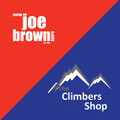


Comments